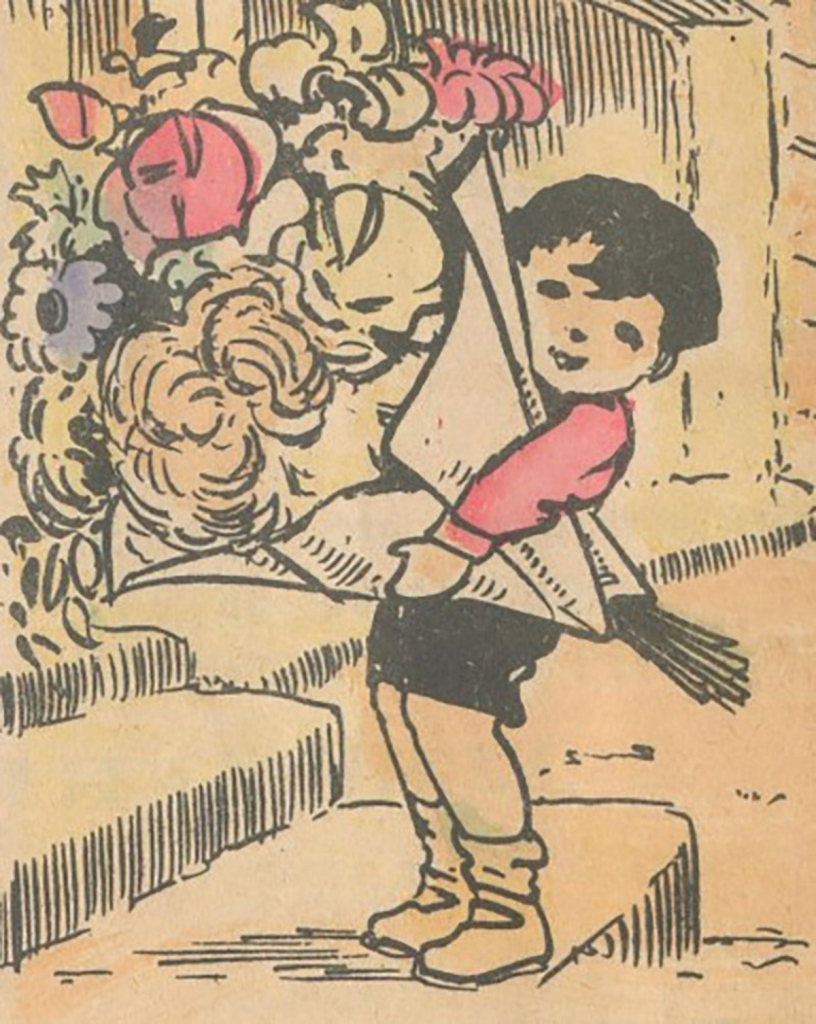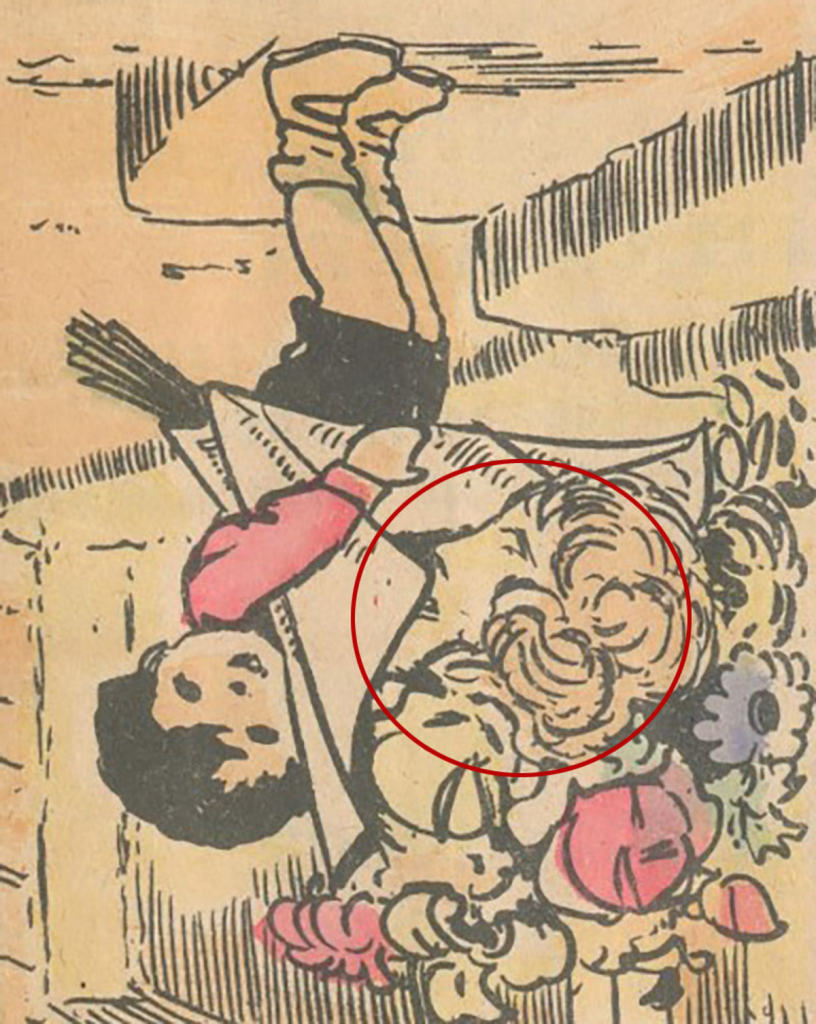The Timeless Tradition of Gifting Flowers and Letters: A Child’s Heartfelt Surprise
Introduction
Have you ever felt your heart swell when a child shyly hands you a bouquet of fresh blooms tied with a ribbon and a crinkled piece of paper? That endearing moment—captured perfectly by the little boy in our illustration, balancing vibrant flowers and a folded letter—reminds us how simple acts of kindness leave lifelong impressions. In this article, we’ll dive into the enduring appeal of gifting flowers and handwritten notes, explore cultural roots, and share fun, hands-on ideas for helping youngsters craft their own thoughtful surprises.

The Power of a Handpicked Bouquet
There’s something magical about daisies, roses, or wildflowers cradled in small hands. When a child selects and presents blooms straight from the garden or the florist’s counter, it transforms a mere plant into an emblem of care.
- Nature’s Emotions in Petals
Every flower color speaks its own language: pink for admiration, yellow for friendship, white for purity. Even if the child simply grabs what’s on hand, that spontaneous selection radiates authentic emotion—unfiltered and pure. - A Lesson in Observation
Encouraging kids to notice which flowers brighten a room or which scent makes Grandma smile helps them tune into others’ preferences. It’s a real-world exercise in empathy, disguised as a trip outdoors or a stroll through a market stall. - The Delight of Imperfection
Unlike store-bought arrangements, home-picked bouquets come with quirky foliage, uneven stems, and blossoms at various stages. That raw authenticity makes the gift even more precious—like a fingerprint of the giver’s heart.
The Magic of Handwritten Notes
Alongside petals, the folded letter our little messenger carries holds immense sentimental power.
- Words That Last
Emails and texts vanish with a swipe; paper notes endure. A sweet “I love you” or “You’re the best” penned in crayon becomes a keepsake tucked into books or memory boxes for years to come. - Crafting Confidence
Asking children to write or draw their message boosts literacy and self-expression. They learn that their words hold weight—that a simple “Thank you” can brighten someone’s entire day. - Personalization Over Perfection
Stickers, doodles, and colorful markers let kids fully own their message. The more playful and imperfect, the more it reflects their unique personality—far more meaningful than a generic store card.

Flowers and Letters Through History and Culture
The pairing of blossoms and written words isn’t new—it’s woven into traditions around the globe.
- Victorian “Language of Flowers”
In 19th-century England, bouquets became secret messengers. A red rose declared love, a daisy whispered innocence, and a sprig of myrtle vowed fidelity. Recipients, fluent in floral code, read the arranger’s sentiments without a single word. - Japanese Hanakotoba
In Japan, each bloom carries distinct symbolism: cherry blossoms remind us of life’s fleeting beauty, while carnations convey divine love. Handwritten poetry, or waka, often accompanied these offerings, blending art forms into a harmonious gift. - Modern Celebrations
Today, we fuse these traditions in birthday parties, Valentine’s Day cards, and Mother’s Day surprises—all reviving that centuries-old impulse to pair petals and prose.

Teaching Kids About Thoughtfulness
Helping children become mindful gift-givers sets them up for empathetic relationships throughout life.
- Garden to Gift
If you have outdoor space, start a small flower patch together. Pulling petals at just the right time teaches patience and anticipation. No garden? A windowsill herb planter or a potted geranium works as beautifully. - Story-Driven Creativity
Read a short fable—like “The Selfish Giant” by Oscar Wilde—then invite kids to illustrate a scene or write a few lines about kindness. Attach that mini-tale to the bouquet for added depth. - Wrapping and Ribboning
Show them how to trim stems cleanly, arrange colors for contrast, and tie a bow. These hands-on skills boost fine motor development and give them pride in a polished final product.

DIY Tips for Crafting the Perfect Child-Made Bouquet and Note
Ready to roll up your sleeves? Here are practical pointers:
- Gather Supplies
Stock up on kid-friendly scissors, masking tape, a small bouquet vase or jar, assorted fresh flowers (store-bought or foraged), and colorful notecards. - Teach Basic Floral Design
Demonstrate the “odd number” rule—arranging three or five flowers looks more natural than two or four—and alternating tall stems with shorter blooms for visible layers. - Add Natural Accents
Encourage using sprigs of eucalyptus, lavender, or even decorative grasses. These elements add texture and fragrance, turning a simple bunch into a sensory delight. - Personalize the Note
Offer templates with prompts—“I picked these flowers because…” or “You make me smile when…”—to guide budding writers while letting their creativity shine. - Celebrate the Delivery
Build excitement: ring the doorbell, present the gift on a tray, or plan a mini-ceremony with applause. Honoring the moment reinforces the joy of giving.

Conclusion
The image of that sweet child carrying a bouquet and a letter captures the universal magic of combining nature’s beauty with heartfelt words. Whether it’s a spur-of-the-moment gesture or a carefully planned surprise, the act of gifting flowers and handwritten notes builds empathy, creative confidence, and lasting memories. So why not invite a child (or rediscover your own inner kid) to gather petals, pick up a crayon, and craft a gift from the heart? In doing so, you’ll keep alive a timeless tradition—and prove that sometimes, the simplest presents are the ones we cherish most.





